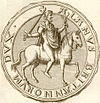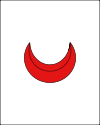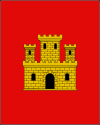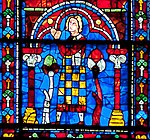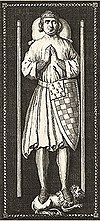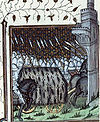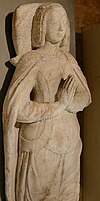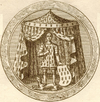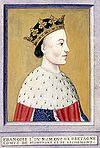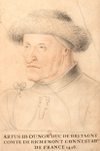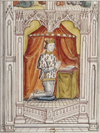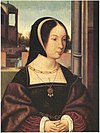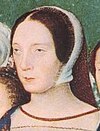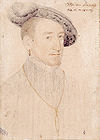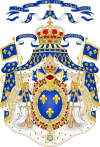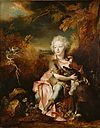You can help expand this article with text translated from the corresponding article in French. (July 2010)Click [show] for important translation instructions.
|
This is a list of monarchs of the Duchy of Brittany . In different epochs the sovereigns of Brittany were kings, princes, and dukes. The Breton ruler was sometimes elected, sometimes attained the position by conquest or intrigue, or by hereditary right. Hereditary dukes were sometimes a female ruler, carrying the title duchesse of Brittany. Its principal cities and regions were ruled by counts who often found themselves in conflict with the Breton ruler, or who became the Breton ruler.
Contents
- Early Breton monarchs
- Dukes of Brittany
- Dukes under the Carolingians
- House of Nantes
- House of Rennes
- House of Cornouaille
- House of Penthièvre
- House of Plantagenet
- House of Thouars
- House of Dreux
- Breton War of Succession
- House of Montfort
- House of Valois
- As courtesy title
- Family tree
- See also
- References
- External links
During the declining years of the Roman Empire, the earliest Breton rulers in Gaul were styled "kings" of the small realms of Cornouaille and Domnonée. Some such kings may have had a form of hegemony over all of the Brythonic populations in the Armorican peninsula, and Riothamus is called King of the Britons by the chronicler Jordanes. However, there are no certain rulers of the whole of Brittany, which was divided into the fiefdoms of local counts.
The Duchy of Brittany had its origins in the Battle of Trans-la-Forêt of 939, which established the river Couesnon as the boundary between Brittany and Normandy. [1] In 942, Alan II paid homage to Louis IV of France; however, the duchy did not gain royal attention until 1123, when Louis VI of France confirmed the bishop of Nantes. [2] No other Duke of Brittany repeated Alan II's homage until Arthur I recognised Philip II of France as his liege in 1202. [2]
The area was often called a Duchy, and its monarchs were considered independent Sovereign Dukes. However, one historical view is that before the middle of the 12th century the Dukes of Brittany were often also called Counts by the Kings of France, as the kingdom of France then saw Brittany as no more than a county.[ citation needed ] In 1297, the peninsula was elevated into a Duchy in the peerage of France. [3] This view is not consistent with the manner in which Charles VIII of France and then Louis XII of France approached the Duchy and the rights of Anne of Brittany who married each in succession.

